
Photo/Illustration: Kim Proctor
When I was young, I designed sets for summer-stock companies and loved every minute of it. The theaters were cramped and cluttered backstage, and the scenery was jerry-built. But when the house lights dimmed and the curtain went up, the mundane became magical.
Gardeners create magic, too, using the simplest of tools: stakes, string, and wire grids. Picture-perfect perennial borders are no more “real” than stage sets. Delphiniums and tall Asiatic lilies only maintain their regal bearing with support from appropriately placed stakes, while large peony clumps compose themselves within steel rings.
I did not set out to become an expert on staking. I used to consider it a tedious chore, but as I learned how to do it successfully, I became intrigued with the whole process. You have to understand the natural shape and growth habit of each plant and find an appropriate method of maintaining its carriage without drawing attention to the means. The key is to stake early, stake appropriately, and keep an eye on the plants as they grow. There are three ways to support your plants: grow-through grids, corset systems created with stakes and string, and single stakes of many different lengths to which individual stems of tall or heavy-headed plants can be tied with garden twine.
Grow-through grids are all-purpose problem solvers
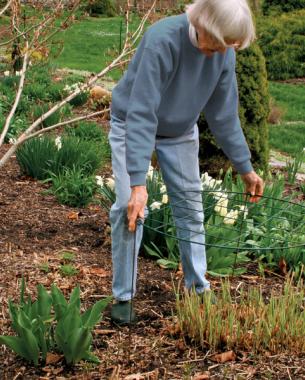
Photo/Illustration: Kerry Ann Moore
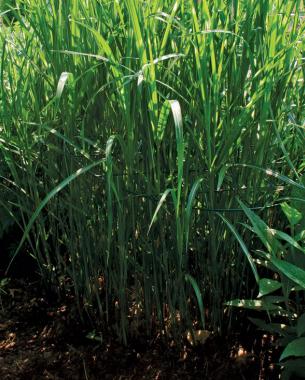
Photo/Illustration: Kerry Ann Moore
Grow-through grids are invaluable, and if they were made in enough sizes, they would solve most staking problems. For robust, clump-forming plants, like peonies ( Paeonia spp. and cvs., USDA Hardiness Zones 3–8), Siberian irises ( Iris cvs., Zones 3–9), globe thistles ( Echinops spp. and cvs., Zones 3–9), coneflowers ( Rudbeckia spp. and cvs., Zones 3–11), and ornamental grasses, they are the ideal form of support. Their evenly spaced tic-tac-toe pattern of steel rods allows two or three stems to grow through each opening. Grow-through grids come in different shapes—round, square, or rectangular—with legs that are 18 inches to 3 feet tall. Most are made of stout steel wire coated in green plastic, which makes them virtually invisible if properly installed.
 The author uses a grow-through grid to keep her peonies standing tall.
The author uses a grow-through grid to keep her peonies standing tall.Photo/Illustration: Kerry Ann Moore
For the best results, set the grid a few inches above a plant early in the season, before the leaves mature. Attach the legs one at a time—they hook around the rim of the grid—and push them into the ground. Space the legs equidistant from each other if possible. When well placed and installed at the right time of year, the grid will disappear completely beneath the expanding foliage. You will have to revisit the plant periodically during the season and, in some cases, raise the grid and replace the legs with longer ones to keep pace with new growth.
Floppers have a few things in common
These are the types of plants that usually need a bit of help to stay upright:
• Plants at least 6 feet tall. Plants like delphiniums and lilies should be staked individually and tied in several places along the stem.
• Hollow-stemmed plants. Tall purple meadow rues (Thalictrum rochbrunianum and cvs., Zones 5–9) and old-fashioned valerian (Valeriana officinalis, Zones 4–9) are good examples of hollow-stemmed plants. Unsupported, their stems can snap in a strong wind.
• Plants with heavy flower heads. Many Asiatic and Oriental lilies belong in this category. Oriental poppies and double and semidouble peonies, though not nearly as tall, require staking for the same reason. Their stems can’t do the job without help.
• Airy plants. Nonvining clematis, like the pretty but sprawling Clematis recta and Clematis integrifolia (Zones 4–11), need containing. So do baby’s breath (Gypsophila paniculata and cvs., Zones 5–9) and other airy, fine-stemmed plants.
• Large clumps of multistemmed plants. Clump-forming perennials that are at least 2 feet tall may need staking if the clumps are large. ‘Autumn Joy’ sedum (Sedum ‘Autumn Joy’, Zones 3–11), for example, is self-supporting until it expands into a hefty clump; then a girdle helps keep it tidy.
• Sun-loving plants grown in partial shade. While many sun lovers will grow well in partial shade, their inclination will always be to lean toward the light. Some plants, therefore, that would not require support in full sun will often need a helping hand in shade.
Corset systems keep tall floppers in line
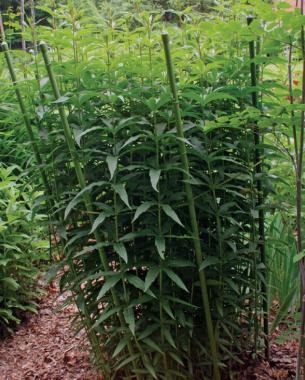
Photo/Illustration: Kerry Ann Moore
Plants like peonies don’t put on much new vertical growth after flowering, but grasses and tall summer-blooming perennials can double or triple in height and girth. A grid set in spring may be inadequate, therefore, for the task of supporting the same clump in August. The next step is to add a circle of five or six 8-foot-tall stakes around the outside of the grid. Drive the stakes into the ground, tilting them away from the clump at a slight angle. The purpose of the tilt is to retain the desired vase shape of the mature plant. Grab a ball of green twine, and tie the free end around the first stake about 18 inches higher than the grid. Continue running a course of string around each successive stake until you end up where you started. Tie the two ends of the string in a knot. From the front of the bed, you shouldn’t see either the corset of string or the stakes. But it takes practice to do it well. Depending on the ultimate height of the plant, you may have to run another course or two of string around the stakes to support a late growth spurt.
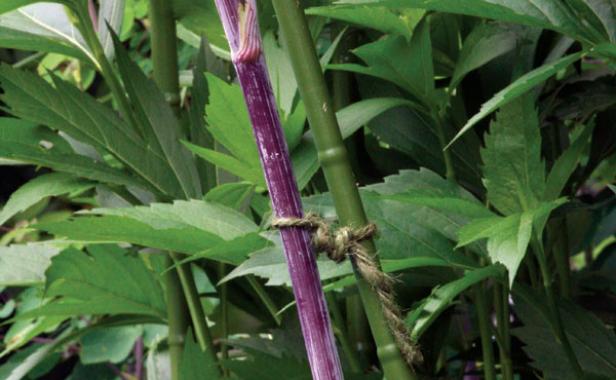 Exceptionally tall plants, like ‘Lavender Mist’ meadow rue (pictured), prefer individual stakes for each flowering stem.
Exceptionally tall plants, like ‘Lavender Mist’ meadow rue (pictured), prefer individual stakes for each flowering stem.Photo/Illustration: Kerry Ann Moore
Plants with rigid stems and a naturally upright form won’t need a grid. They need only a corset of four or five stakes and a couple of levels of string to keep them tidy. The corset arrangement can also be employed with tall plants that are too big for even the largest grid. The bigger the plant, obviously, the taller the stakes you will need and the more of them. Keep checking on the progress of tall plants throughout the season, and add more strings as needed.
Tip: The right way to attach a stem to a stake
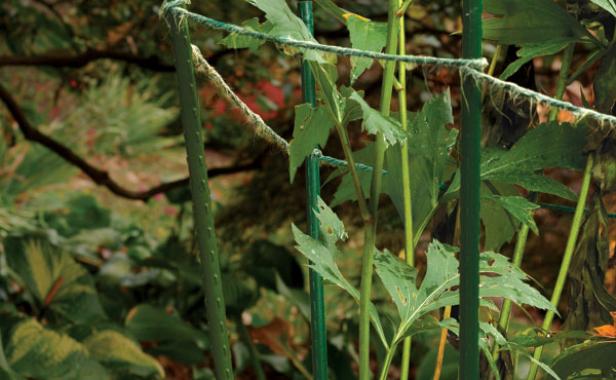 Photo/Illustration: Kerry Ann Moore
Photo/Illustration: Kerry Ann Moore
Behind the scenes
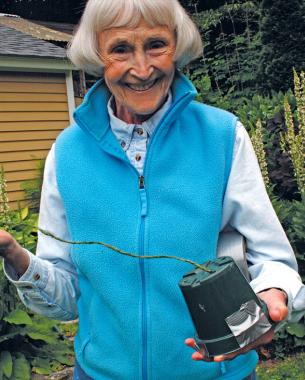
Photo/Illustration: Kerry Ann Moore
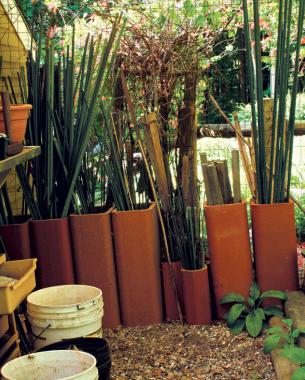
Photo/Illustration: Kerry Ann Moore
Prevent a tangled mess of twine: A neat, new ball of twine is easy to use. At first, the loose end emerges from the center and feeds out freely. But as the ball loosens up, you can find yourself with a tangle of string on your hands. Stuff your ball of twine into a plastic flower pot, threading the free end through one of the drainage holes. Keep the ball in place with a piece of tape across the top of the pot.
Maintain order in your toolshed: Sort your stakes by height, and store them in clay flue tiles to keep them neat and vertical. Use tall tiles for tall stakes and short tiles for shorter stakes. Flue tiles are inexpensive and available from most local building- supply companies.
Prized blooms deserve their own stakes
There are some tall plants that look better if you don’t stake them until they have almost reached their maximum height. ‘Lavender Mist’ meadow rue (Thalictrum rochebruneanum ‘Lavender Mist’, Zones 5–9) and many Asiatic lilies (Lilium cvs., Zones 3–8) belong in this category. Hold off staking meadow rue until it blooms for the first time, and wait for the lilies to form buds. By this time, their stems will have achieved a graceful angle: not too acute but not too upright, either. That is the perfect moment to find a stake that is the same thickness as the stem, thrust it into the ground at the exact same angle, and gently tie the stem to the stake in two or three places.
If all of this sounds like a lot of trouble, remember that it is what happens backstage that creates the magic.


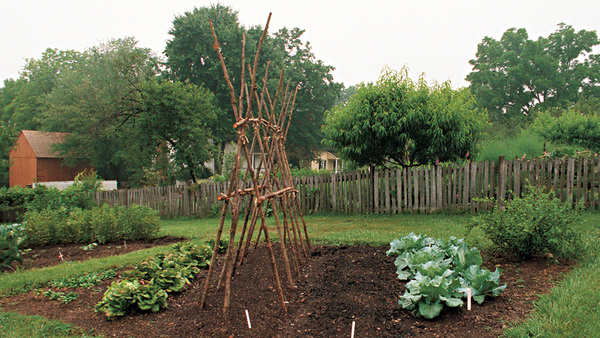

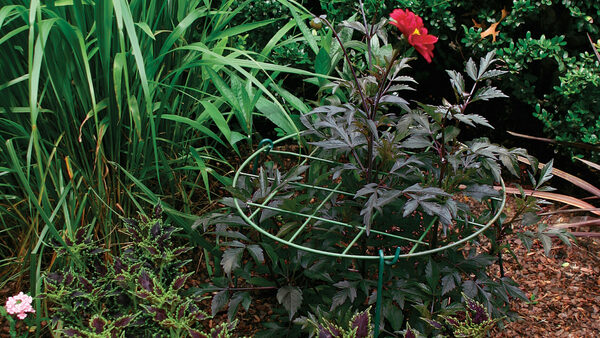
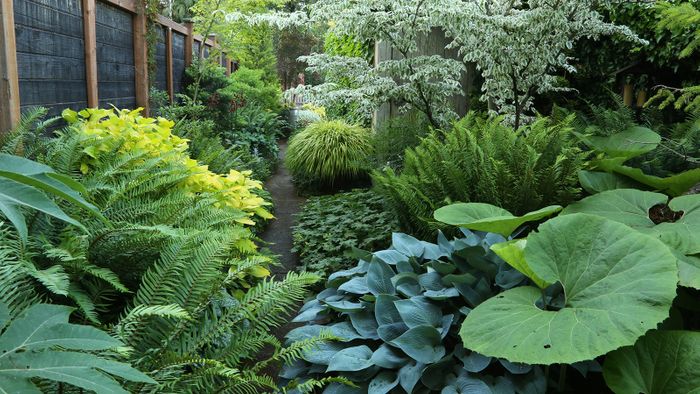
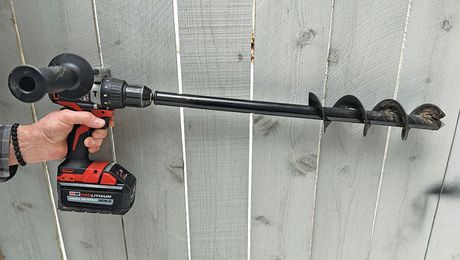






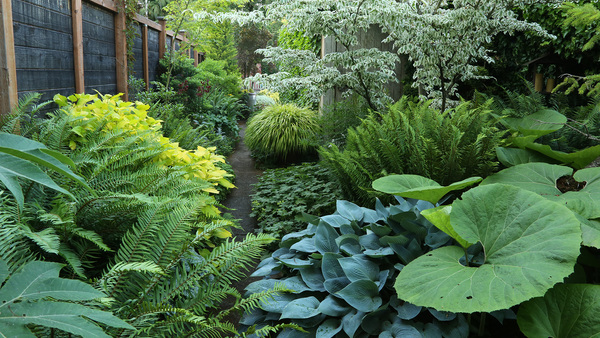



Comments
Log in or create an account to post a comment.
Sign up Log in